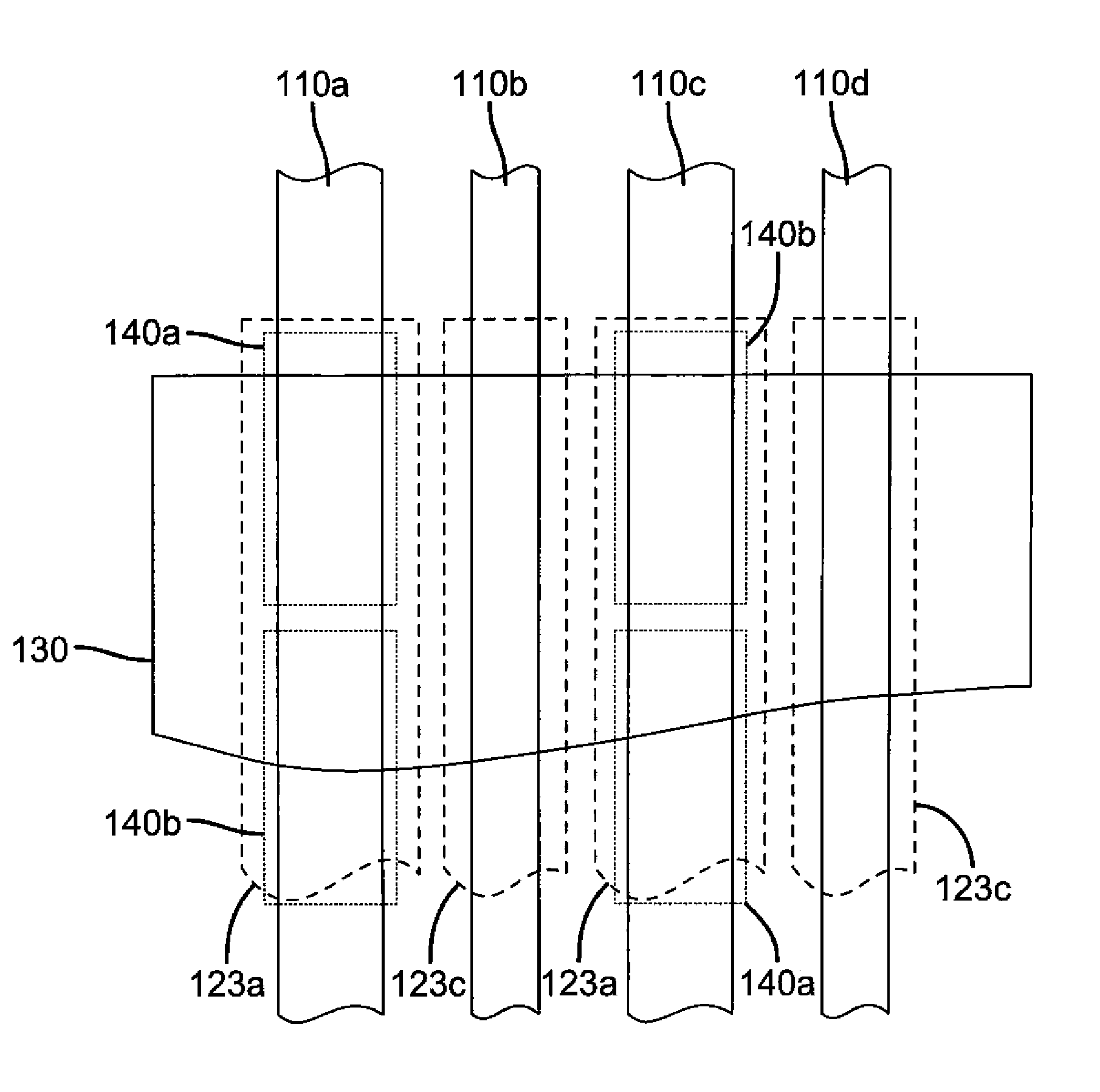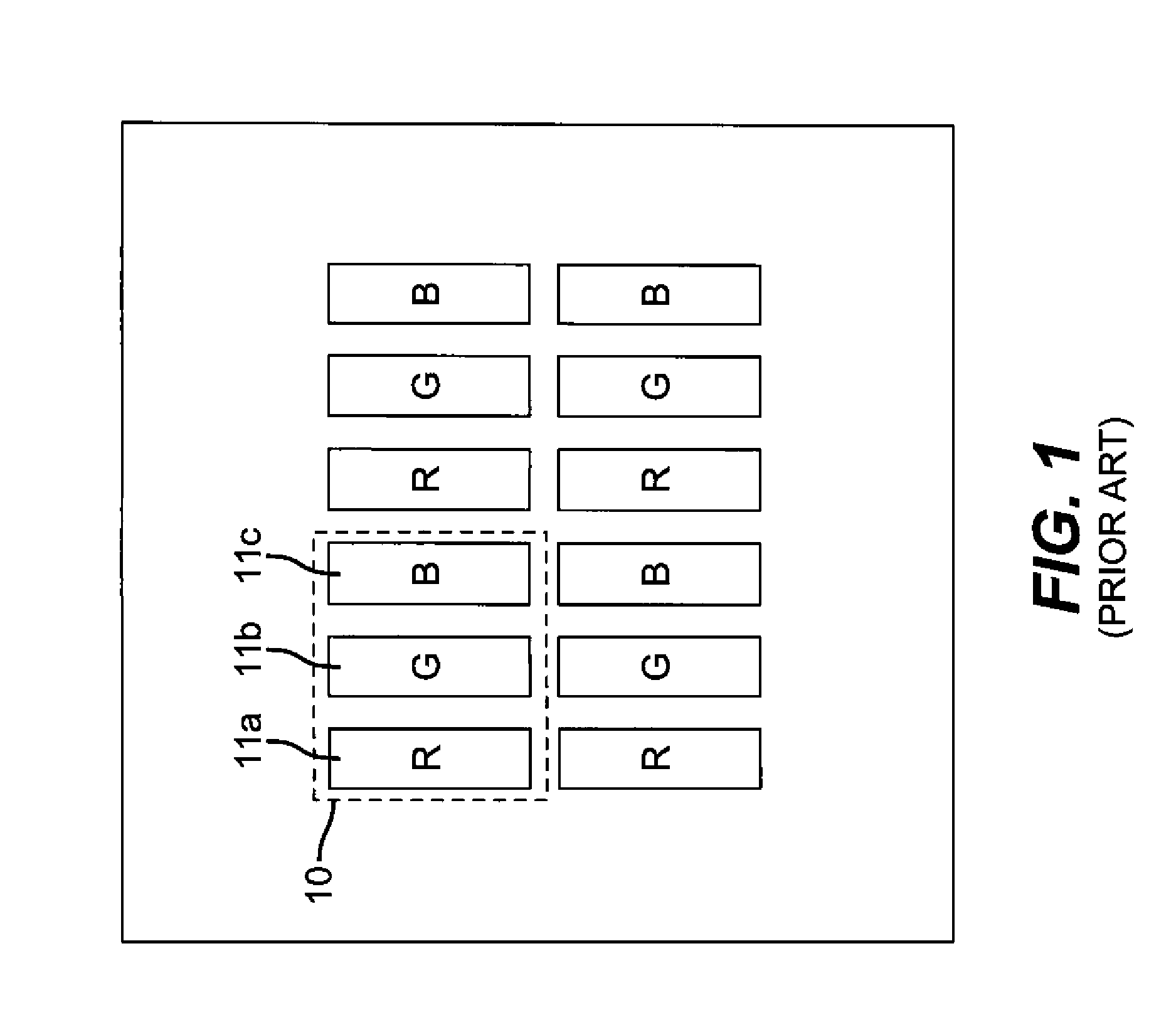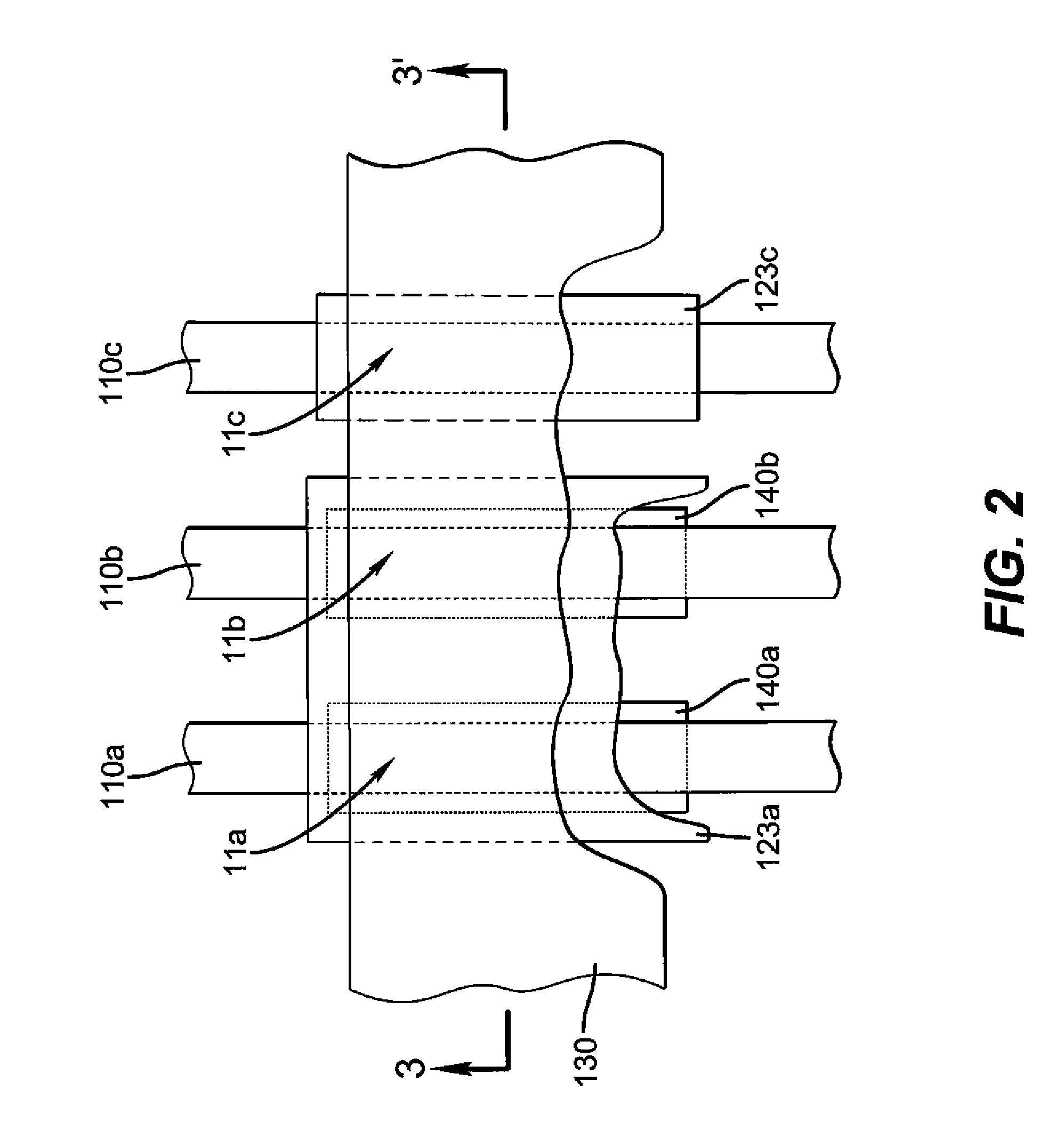OLED with magenta and green emissive layers
a technology of emissive layers and oleds, applied in the field of multicolor oled displays, can solve the problems of slow manufacturing throughput, complicated, and inconvenient manufacturing, and achieve the effects of fewer precise alignments, large color gamut, and simplified manufacturing steps
- Summary
- Abstract
- Description
- Claims
- Application Information
AI Technical Summary
Benefits of technology
Problems solved by technology
Method used
Image
Examples
first embodiment
[0031]FIG. 2 shows a top side view of pixels 11a, 11b, and 11c according to the present invention. In a passive matrix configuration, these pixels can be addressed by providing a matrix of orthogonal electrodes such as first electrodes 110a, 110b, and 110c and second electrode 130. That is, pixel 11a is constructed from first electrode 110a and second electrode 130, pixel 11b is constructed from first electrode 110b and second electrode 130, and pixel 11c is constructed from first electrode 110c and second electrode 130. In this configuration, all pixels in a column share the same first electrode and all pixels in a row share the same second electrode. As such, these pixels are arranged into a stripe pattern. However, the present invention is not limited to this arrangement and other arrangements such as delta pattern arrangements and quad arrangements can be applied by one skilled in the art. Furthermore, the present invention is not limited to the passive matrix configuration and ...
second embodiment
[0045]FIG. 9 shows a top side view of pixels 11a, 11b, 11c, and 11d according to the present invention. The magenta light emitting layer 123a is provided for pixels 11a, 11b, and 11c to be common between these pixels, and therefore requires a precise alignment or patterning step. The green light emitting layer 123c is provided for pixels 11c and 11d, and requires a precise alignment or patterning step. In this manner, the number of precision aligned depositions required to form these four differently colored pixels is reduced from four to two. Light emitting layers 123a and 123c can be formed as previously described.
[0046]The combination of light emitting layers 123a and 123c in pixel 11d is arranged so as to produce light having broadband spectral components corresponding to the desired color of pixel 11d. The broadband emission is defined as a spectrum having emission throughout the visible wavelength range, and can be white in color. In order to achieve the red color desired for ...
PUM
| Property | Measurement | Unit |
|---|---|---|
| wavelengths | aaaaa | aaaaa |
| wavelengths | aaaaa | aaaaa |
| peak transmittance | aaaaa | aaaaa |
Abstract
Description
Claims
Application Information
 Login to View More
Login to View More - R&D
- Intellectual Property
- Life Sciences
- Materials
- Tech Scout
- Unparalleled Data Quality
- Higher Quality Content
- 60% Fewer Hallucinations
Browse by: Latest US Patents, China's latest patents, Technical Efficacy Thesaurus, Application Domain, Technology Topic, Popular Technical Reports.
© 2025 PatSnap. All rights reserved.Legal|Privacy policy|Modern Slavery Act Transparency Statement|Sitemap|About US| Contact US: help@patsnap.com



